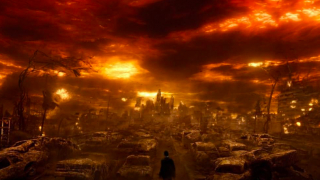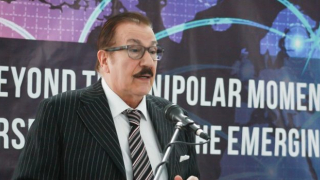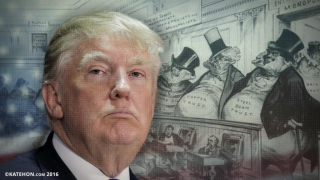From globalism to multipolarity
System and situation
The current international system, which includes the interstate system, global society and economic globalization, is characterized by a triple dynamic, of i) fragmentation, ii) polarization and iii) confrontation, with the latter translating into a reconfiguration of military alliances, given the risks of conflicts between China, the United States and Russia, faced with the Thucydides trap (G.Allison).
These risks belong to the historical order and produce ambivalent politics of rivalry-partnership and antagonism. These politics are all about control of Eurasia and the Indo-Pacific Ocean Area, articulating the two complementary strategies of Heartland (1) and Rimland (2).
The rivalries, which are now shaking many parts of the world, have forced the East and West to tighten their military alliances and to start looking for a new project to ensure security in Europe, and the strategic stability and unity of the European space.
However, any attempt to define any regional order can be conceived today only in the perspective of a global planetary order and of the search for forms of planetary equilibrium and stability.
It is by reference to the geopolitical and strategic triangulation of Russia, the United States and China and, in sub-order, of Europe, India and Japan, that the freedom of manoeuvre of the regional powers in the Middle East, the Gulf and Iran must be understood. It is here that one of the keys to the general strategy of the great powers lies.
The system and its levels of power
From an analytical viewpoint, the international system superimposes several levels of power:
– the classical power poles, pluri-centric and virtually conflicting (America, Europe Russia, China, India ..)
– a concealed global bipolarism, based on an asymmetric condominium (United States and China)
– three major zones of influence, inspired by three civilizational areas, these being Europe, the United States and the Middle Kingdom.
In this context, the big world stage becomes the setting for a multitude of strategies: universal for the United Nations, economic for the Bretton Woods institutions, and security and military through the system of regional alliances (NATO).
The geopolitical uniqueness of the United States, the world’s largest island, is that it will be forced to come to terms with the vast expanse of Eurasia, the centre of gravity of history.
Will America become a power pole among others, disputed, but still dominant?
Strategic movements and antinomies of alliances in Eurasia
In any international system, the decline of the hegemonic player is signalled by a tightening of military alliances. This moment presents itself as an antinomy of options between conservative powers („status quo”) and disruptive powers (revisionists or dissatisfieds).
Today, the strategies of the major players on the world stage break down into, for the West, a defensive strategy of stabilization and active vigilance, and for the East, an offensive strategy of subversion and challenging the existing power hierarchy.
Thus, in the current situation, two rival strategic movements are emerging at the planetary level:
– the Sino-Russian alliance, aimed at ensuring the strategic autonomy of Heartland in the case of conflict, and promoting, in peacetime, intercontinental cooperation on major infrastructures (OBOR [One Belt One Road] with the participation of about 70 countries).
– the strategy of „containment” of the continental powers by the maritime powers of „Rimland” (America, Japan, Australia, India, Europe, etc.), as a peninsular belt outside Eurasia
Let us remember that both sides are in a situation of declared rivalry, with opposing strategic goals.
Indeed, the Sino-Russian couple is defined as a „strategic competitor” or a „systemic competitor” (notably by the EU),a competitor refuses to submit to the international order resulting from the Second World War and designed by the United States.
The multipolar system.”A global concert of nations” or „strengthened global governance”?
The fundamental characteristic of the multipolar system is that it is not based on globalization, in the form of „strengthened world governance”, with multilateral institutions (UN, IMF, G7, or G20), complementing the U.S. system, and aimed at integrating their member states into a global cooperative game. The multipolar system seeks rather to identify the essential interests of the main players, whose objectives are virtually conflictual.
Thus the aim is not to identify equilibriums, based on the concepts of exchange and cooperation, but to predict strategic breaks, beneath the surface of apparent stabilization.
From Europe to Eurasia. A change in geopolitical paradigm
Thus the end of bi-polarity, with the collapse of the Soviet empire, has generated a source of tension, between the centrifugal efforts of the neighbouring states, the „near foreigners”, seeking to free themselves from the imperial centre, and the opposite reaction of Moscow, keen to regain its authority on the periphery through a series of enveloping alliances. (CSTO, SCO)
Russia and all the nations of Central Asia as far as the Gulf, Middle East and Maghreb countries lack leaders who have experienced democracy. The European Union in turn has, for the purpose of influence and control of tensions, no clear geographic-strategic concept of Heartland, which starts on the Mediterranean rim, and includes the Turkish plateau and the Caucasus, before arriving at the pivotal land area of Central Asia.
It is to the Atlantic Alliance that has been devolved the vocation of welding the geopolitical interest of the West, in this vast expanse between America and Europe.
The „decline of Hegemon”.Hegemonic alternation or „systemic revolution”?
The question that emerges from the debate about the role of the United States in the current situation is whether the „hegemonic stability” (R. Gilpin) which has been guaranteed for seventy years by America is in the process of disappearing, leading to the decline of Hegemon and Western civilization, or if we are confronted with hegemonic alternation and a post-imperial world.
The accompanying and equally central question can be formulated thus: „What form will this transition take?”
Will it take the already familiar form of a series of conflicts, one leading to another, according to the model of Raymond Aron, based on a reading of the twentieth century, or will it take the form of an overall change of civilization, of the idea of society and of the figure of man, following the Strausz-Hupé model of „systemic revolutions”, marked by four great revolutionary periods in history, embracing the universe of the socio-political relations of the western world and covering the large and well-known civilizational areas.
Each of you will understand that this is our own question, that of our time and our forum.
To whom does the future belong?Planetary space, democracy and nation-states
In an interdependent environment, nations that have been shaped as nationstates and civilization states will progress. These nations have sustainable configurations, with a basis of political stability, whether traditional or modern, and of geographical and environmental coherence which have allowed them to affirm themselves throughout history and which will today ensure their survival.
Philosophically and strategically, the new approach to the historical process will be systemic, pluralistic and complex, antithetical to the dialectical and universalizing method of Western Hegelianism.
Today, the undersides of History are revealing the bitter disappointments of a crisis of the legitimacy of democracies, of conceptions of the rule of law and of universal rights, guilty of pulling apart the intimate relationship between the universal and the individual in favour of concepts and visions of the world which lack transcendence, paving the way for the revolt of tradition and the past as authentic forms of historicity.
Against this background, an enlargement of the „democratic model” appears, in its abstract form, as the expression of a utopian vision of History, clashing with a messianic interpretation of the historical world.
In this analogy, tradition and traditional societies testify to the expression of other forms of „historicity”, indifferent to the idea of rationalism, doubt and „democracy”, apart, that is, from their cosmopolitan, libertarian and non-organic layers, which are in any case excluded from public office.
To interpret democracy as a „model” is also to deny the fact that political regimes evolve according to their own laws, or according to their own historical individuality, which is in Europe sovereignist or stato-national.
Brussels, 11 September 2019
(1) Heartland, „The Geographical Pivot of History”, 1904, Halford Mackinder
(2) Rimland, the sea border of Eurasia, or „inner crescent”, the geostrategic concept of Nicholas Johan Spykman.
Text prepared for presentation at the „Third Chisinau Forum”, 20 and 21 September 2019














